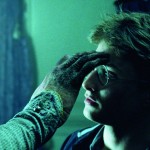VFX: keeping the illusion
 VFX Houses may have tighter budgets, but their work has to be more integrated and refined than ever, sue to increased client and audience expectation. Matthew Griffin reports.
VFX Houses may have tighter budgets, but their work has to be more integrated and refined than ever, sue to increased client and audience expectation. Matthew Griffin reports.
From the early days of the moving image, writers directors and studios have continued to push the boundaries of storytelling. From painted backdrops to green screens, or animatronics to complex CGI, filmmakers are always on the search for the next technology that can fulfill their vision. It doesn’t matter if it’s a film, television or TV projects, the intention of the director isn’t always just point and shoot; their creative ideas, in order to be translated To the screen, need to be in the language of visual effects.
This is where VFX houses step in. 2D and 3D artists work to make fantasy a reality. Whether a dedicated VFX studio or an all fronts post-house fits the bill, the outcome needs to be the same. A flawless representation of the creator’s intent. One way this can be achieved is early collaboration with the production and the people who make it possible. Executive producer at Rising Sun Pictures, James Whitlam agrees.

